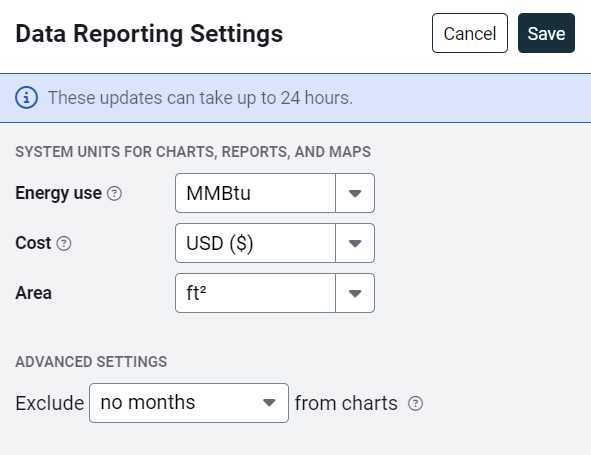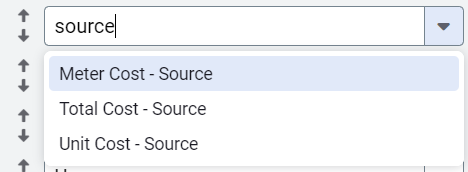System currency and local currency
You can enter and view bills in their source currency or in the system currency. The system currency is useful for reporting because it shows all cost data rolled up and compared consistently.
To configure the system currency:
- Go to the Settings menu (Gear icon).
- Select Data Reporting Settings.
- For Cost select your system currency from the drop-down.
- Save.
*Currency conversion uses https://openexchangerates.org/

System currency
System currency is the currency set in Data Reporting Settings. This currency is used in reports, dashboards, and when viewing bills.
Not all reports honor system currency, we've updated the most popular reports so far:
- Report 01
- Report 02
- Report 04
- Report 06
- Report 08
- Report 12
- Report 17
- Report 18
- Report 19
- Report 24
- Report 27
Conversion limitations
When you change the system currency, review the following items and update manually.
- Recalculate Cost Avoidance.
- Review and update Cost Avoidance special adjustments costs and unit costs.
- Review and update Cost Avoidance other savings for cost.
- Generate a new budget. Too avoid confusion you may want to delete the old budget.
- Review and update Rate Schedules.
- Review and update the bill approval limits for each user.
- Review and update each bill audit and the amount you have entered for the minimum total cost.
- Review and updated the cost recovery flags on each bill.
Source currency
You can manually change the currency type for an individual bill when you are entering or viewing the bill.
Here is an example of how to change the currency when you are manually entering the bill.

You can switch the currency after the bill is saved. The conversion date for the bill is visible in the popover text.

Accrual bills
Accruals are generated in the configured system currency.
Bill lists
You can add columns to your meter bill list to see source costs.

Records lists
In the Emissions module, you can view and compare emissions records cost in both the source currency and the system currency.

Conversion factor date
The date used for the conversion of the bill is typically the statement date.
- Use the statement date of the bill. If the statement date is in the future, try the next step.
- Use the end date of the bill. If the end date is less than or equal to the bill entry or edit date. If this date is in the future, try the next step.
- Use the start date of the bill. If it is less than or equal to the bill entry or edit date. If this date is in the future, try the next step.
- The bill entry or edit date is used for the conversion factor.
If any bill dates are prior to January 1, 1999 the conversion date is January 1, 1999.